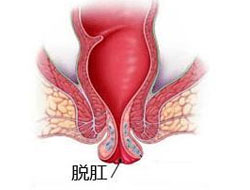 Rectocele is due to the downward and forward bulging of the rectum into the back of the vagina, usually because of damage to or weakening of the muscles and tissues that support the pelvic organs. This can happen in pregnancy and childbirth as well as in postmenopausal women. Rectocele is often associated with CYSTOCElE (prolapse of the bladder into the front of the vagina) and UTERINE PROIAPSE (displacement of the uterus downwards into the vagina). Small rectoceles are contained within the vagina, but larger ones bulge through the vaginal opening to the out side, and are described as third degree rectoceles.
Rectocele is due to the downward and forward bulging of the rectum into the back of the vagina, usually because of damage to or weakening of the muscles and tissues that support the pelvic organs. This can happen in pregnancy and childbirth as well as in postmenopausal women. Rectocele is often associated with CYSTOCElE (prolapse of the bladder into the front of the vagina) and UTERINE PROIAPSE (displacement of the uterus downwards into the vagina). Small rectoceles are contained within the vagina, but larger ones bulge through the vaginal opening to the out side, and are described as third degree rectoceles.
Small rectoceles seldom cause symptoms, but most women with third degree rectoceles are con- scious of a fullness at the vaginal opening that is pushed out further by coughing or sneezing. There may also be problems with passing faeces, such as difficulty getting started or a feeling that the rectum is never completely emptied. Pelvic floor exercises can help to relieve symptoms and prevent worsening, but if the rectocele is third degree or causing symptoms, the problem can be corrected by surgery to tighten the tissues at the back of the vagina that support the rectum.